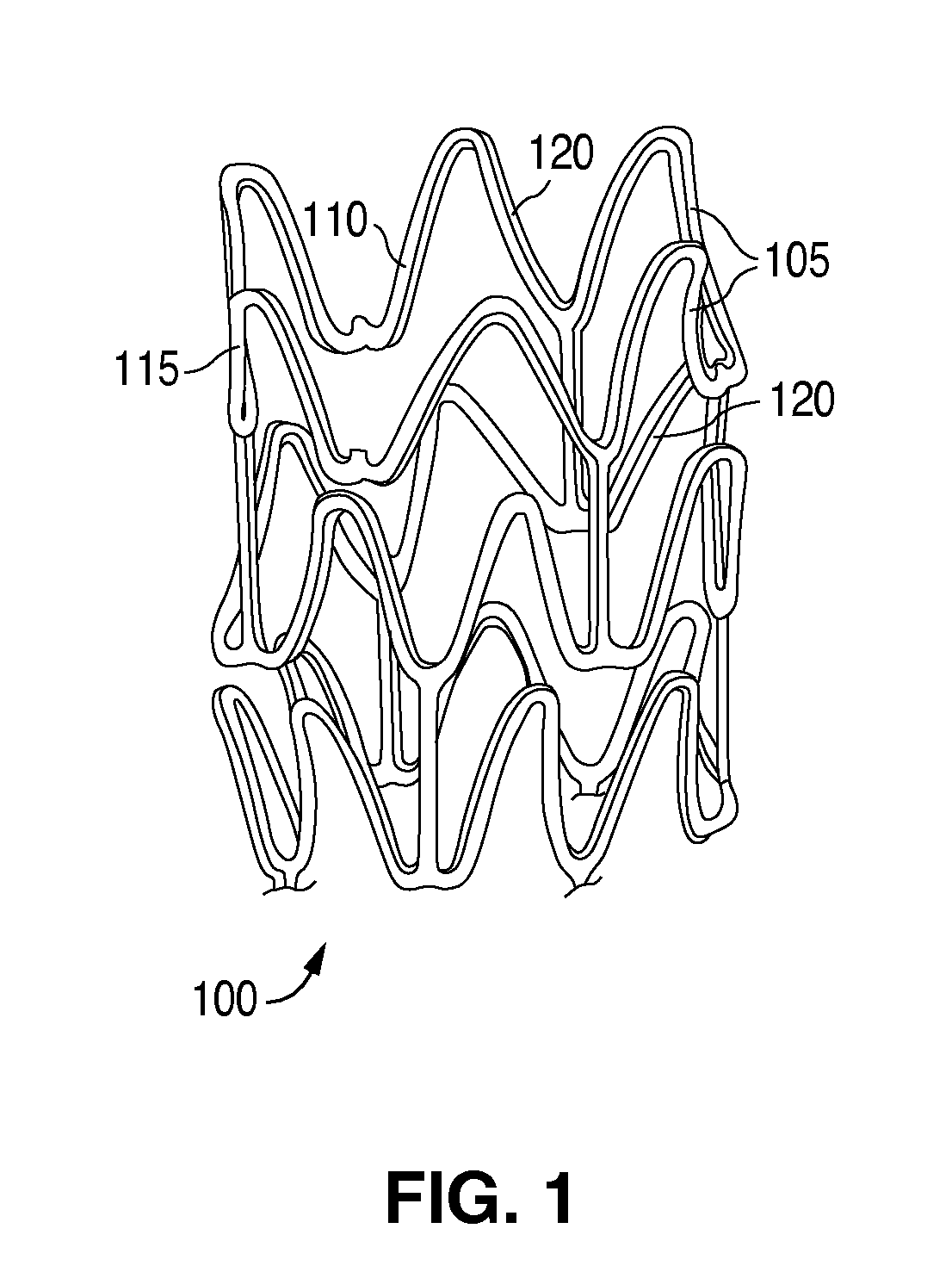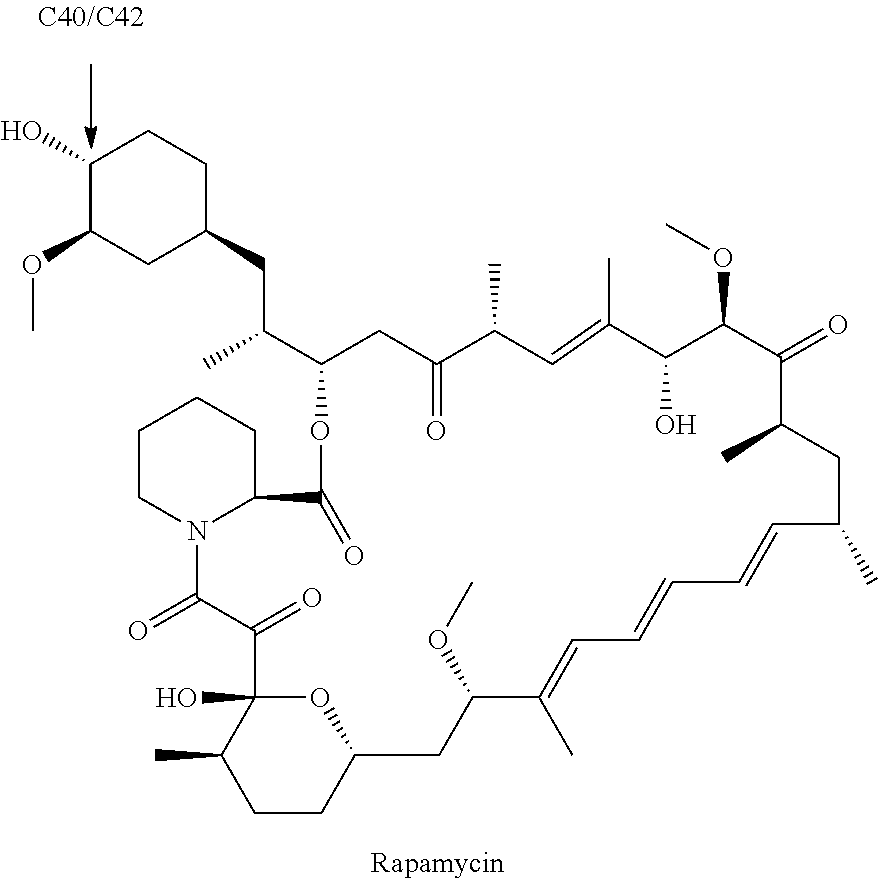Plasticizers for a biodegradable scaffolding and methods of forming same
a biodegradable and scaffolding technology, applied in the field of manufacturing polymeric medical devices, can solve the problems of reducing the service life of the patient, affecting the quality of the patient's body, and affecting the quality of the patient's body, and achieve the effect of lowering the glass transition temperature of the polymer
- Summary
- Abstract
- Description
- Claims
- Application Information
AI Technical Summary
Benefits of technology
Problems solved by technology
Method used
Image
Examples
Embodiment Construction
[0137]Use of the term “herein” encompasses the specification, the abstract, and the claims of the present application.
[0138]Use of the singular herein includes the plural and vice versa unless expressly stated to be otherwise. That is, “a” and “the” refer to one or more of whatever the word modifies. For example, “a drug” may refer to one drug, two drugs, etc. Likewise, “the stent” may refer to one, two or more stents, and “the polymer” may mean one polymer or a plurality of polymers. By the same token, words such as, without limitation, “stents” and “polymers” would refer to one stent or polymer as well as to a plurality of stents or polymers unless it is expressly stated that such is not intended.
[0139]As used herein, unless specifically defined otherwise, any words of approximation such as without limitation, “about,”“essentially,”“substantially,” and the like mean that the element so modified need not be exactly what is described but can vary from the description. The extent to ...
PUM
| Property | Measurement | Unit |
|---|---|---|
| weight % | aaaaa | aaaaa |
| humidity | aaaaa | aaaaa |
| humidity | aaaaa | aaaaa |
Abstract
Description
Claims
Application Information
 Login to View More
Login to View More - R&D
- Intellectual Property
- Life Sciences
- Materials
- Tech Scout
- Unparalleled Data Quality
- Higher Quality Content
- 60% Fewer Hallucinations
Browse by: Latest US Patents, China's latest patents, Technical Efficacy Thesaurus, Application Domain, Technology Topic, Popular Technical Reports.
© 2025 PatSnap. All rights reserved.Legal|Privacy policy|Modern Slavery Act Transparency Statement|Sitemap|About US| Contact US: help@patsnap.com



